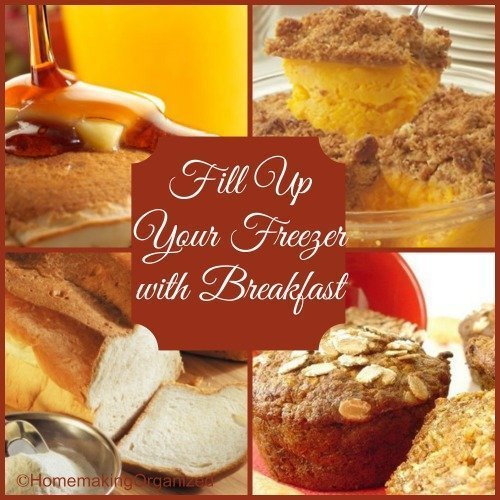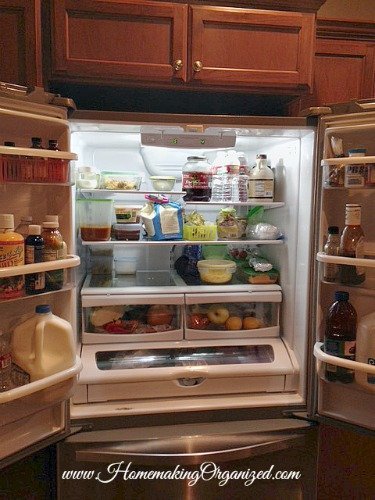52 Weeks of Fresh Breakfast Ideas: Week 29, Fill up the Freezer

I’m taking the bull by the horns so to speak. I haven’t been getting along with breakfast for some time and I aim to rework that this year. Join me in my quest to find 52 Fresh Breakfast Ideas that don’t leave me feeling heavy or my family still hungry. We may revisit dishes you already know or find some new favorites but my goal for 2014 is a new appreciation for breakfast.
Undoubtedly there will be many times when you just don’t have the time or the energy to make a fresh breakfast from scratch. During those times it’s great to be able to pull something out of the freezer, pop it in the oven and serve it up fresh just as if you had just made it.
Many times your favorite breakfast recipe can be doubled or even tripled and then packaged for the freezer. So one for breakfast today and one for breakfast next week when you’re too tired to think.
How to Double Muffins, and Quick Bread Recipes
More is better when it comes to muffins, and quick breads, right? Especially when you’re filling the freezer. But doubling these recipes isn’t just a matter of doubling everything. Sometimes this works but it’s better to know the measurements taken when doubling up on a recipe.
Calculate the amount of baking soda and baking powder based on how much flour you use. So the rule of thumb is use 1 – 1 1/4 teaspoon of baking powder for every one cup of flour and/or 1/4 tsp of baking soda for every one cup of flour. If you have another acidic ingredient like buttermilk or yogurt in your recipe, then you’ll need to add an additional 1/4 – 1/2 tsp of baking soda per cup of buttermilk, yogurt, or other acidic ingredient in your recipe.
How to Double Breads and Rolls
The yeast used in breads and rolls makes these much easier to double. So just doubling the ingredients will work just fine. If you do go beyond doubling though and want to triple or quadruple the recipe, then weighing the ingredients instead of measuring by volume will work better. Professional bakers always weigh their ingredients using a kitchen scale. This helps to keep the ratios consistent.
When doubling any of your baked recipes, just remember not to change the cooking time. You can either use two separate pans to cook in smaller batches, but ultimately you’ll have to be the judge and use your eye to test the doneness of your baked goods. But don’t double the time. And don’t change the cooking temperature.
Now here’s how to prepare your extra batches of baked goods for the freezer
How to Freeze Muffins, and Quick Breads
When freezing muffins and quick breads, first make sure they are cooled completely. Place in a freezer bag or wrap in plastic wrap and then aluminum foil. If you want to use your vacuum sealer then freezer your items first so they are hard and won’t be compressed when sealed.
When you’re ready to use your baked goods, remove them from freezer and defrost them at room temperature. I like to reheat my items in the oven but I know some use the microwave.
How to Freeze Breads and Rolls
Simply place the bread and rolls in a freezer bag , seal tightly, and label. Again if you want to use your vacuum sealer then freezer your items first so they are hard and won’t be compressed when sealed.
When ready to use your breads, defrost them at room temperature. If it’s just regular bread I use as I usually would for toast and such and rolls I’ll reheat in the oven wrapped in foil.
Now do you feel ready to bake large batches of goods for future breakfast?
Here are some great resources to help you get started.
Tip: Reuse the plastic bags you use to store your items in the freezer. Just wash, air dry and reuse.
Freezer Cooking
- 30 Day Gourmet’s BIG Book of Freezer Cooking
- Cinnamon Applesauce Waffles
- Spiced Carrot Bread
- Freezer Safe Glass
- Gluten Free Freezer Foods


